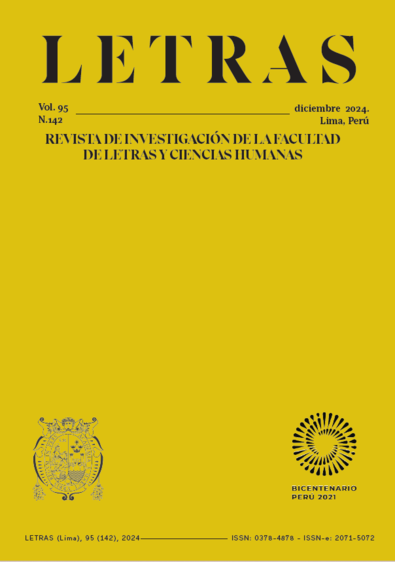Peruvian Independent Publishing. Overview and General Considerations
Abstract
Independent publishing has been forged on the basis of associativity and bibliodiversity, and has faced challenges such as editorial concentration and globalization. The creation of the Red Peruana de Editores in 2005 and the Alianza Peruana de Editores in 2007 marked important milestones in its strengthening. These associations made the work of independent publishers more visible. The field of independent publishing in Peru was consolidated with the creation and sustainability of Editoriales Independientes del Perú, an association with a national vocation. Various legislations, such as the Law for the Democratization of Books and the Promotion of Reading, and public policies, such as the National Culture Policy, have promoted the diversification and strengthening of publishing. Events such as the La Independiente book fair have promoted the decentralized commercialization of books. At the same time, other regions of the country, especially those located in southern Peru, have contributed significantly to the national publishing scene. From their beginnings to their consolidation in the 21st century, factors such as the presence of the Professional School of Literature and Linguistics at the Universidad Nacional de San Agustín show a remarkable growth and consolidation that has been complemented by a similar development in other regions of the country.Downloads
Métricas alternativas
References
Alianza Internacional de Editores Independientes. (2003, 4 de diciembre). Declaración de Dakar 2003. https://www.alliance-editeurs.org/IMG/pdf/Alliance_Declaracion_Dakar_es.pdf
Alianza Peruana de Editores Independientes, Universitarios y Autónomos. (2007, 23 de septiembre). https://alpe.wordpress.com/2007/09/23/acta-de-fundacion-de-la-alianza/
Arce Espinoza, M. R. (2022). La república de las letras en Arequipa, el diálogo de los intelectuales entre los siglos XIX y XXI. Fondo Editorial Universidad Católica de Santa María.
Astutti, A. y Contreras S. (2001). Editoriales independientes pequeñas… Micropolíticas culturales en la literatura argentina actual. Revista Iberoamericana, 67(197), 767- 780. https://doi.org/10.5195/reviberoamer.2001.5856
Cascahuesos Editores. (2008, 26 de noviembre). Presentación de Cascahuesos Editores. Blog de Cascahuesos Editores. http://cascahuesoseditores.blogspot.com/2008/11/qu-impulsa-un-grupo-de-muchachos-fundar.html
Decreto Supremo N.° 009-2020-MC. (2020, 21 de julio). Política Nacional de Cultura al 2030. Diario Oficial El Peruano.
De Diego, J. L. (2018). Actualidad del mercado del libro: el caso argentino. Revista hispá- nica moderna, 71(2), 131-150. https://doi.org/10.1353/rhm.2018.0011
Jaramillo, B. (2017). Estudio diagnóstico del sector editorial del Perú. Cámara Peruana del Libro, Centro Regional para el Fomento del Libro en América Latina y el Caribe. https://infolibros.cpl.org.pe/wp-content/uploads/2017/12/Estudio_diagnostico_del_sector_editorial_del_Peru.pdf
Ley N.° 28086. (2003, 11 de octubre). Ley de democratización del libro y de fomento de la lectura. https://www.bnp.gob.pe//documentos/proyecto_editorial/Ley-n-28086.pdf
Ley N.º 31053. (2020, 15 de octubre). Ley que reconoce y fomenta el derecho a la lectura y promueve el libro. https://www.congreso.gob.pe/Docs/DGP/DIDP/files/ley_31053.pdf
Ministerio de Cultura. (2016, junio). Especial Sector del Libro. Boletín Infoartes, 1. https://www.infoartes.pe/boletin-infoartes-n1-especial-sector-del-libro/
Ministerio de Cultura. (2019, 30 de enero). Convocatoria La Independiente: 3ra Feria de Editoriales Independientes. https://cdn.www.gob.pe/uploads/document/file/309583/Convocatoria_La_Independiente_2019.pdf
Ministerio de Cultura. (2022). Política Nacional de la Lectura, el Libro y las Bibliotecas al 2030. https://transparencia.cultura.gob.pe/sites/default/files/transparencia/2022/07/decretos-supremos/politicanacionallectoralibroal2030final.pdf
Ministerio de Cultura. (2023). Sistema de información de las industrias culturales y artes SIICA. Registro ISBN (2008-2023). Tabla 8. https://www.infoartes.pe/registro-isbn-2008-2022/
Moscoso, L. (2021). Edición independiente. En G. Gacio, T. Gottlieb, P. Slachevsky y M. Villafuerte (Eds.), Glosario de la edición independiente. Alianza Internacional de Editores Independientes. https://www.allianceediteurs.org/IMG/pdf/glosario_de_la_edicion_independiente-2.pdf
Núñez Pacheco, R. y Torres Santillana, G. (2022). Polifonía del silencio. La literatura en Arequipa, 1995-2005. Universidad Nacional de San Agustín de Arequipa.
Ocrospoma, G. (2021). Panorama de la industria editorial en el Perú: análisis estadístico, 2008-2019. Biblioteca Nacional del Perú.
Valencia, M. (2018). La edición independiente. Consideraciones generales sobre el caso colombiano. En D. P. Guzmán, P.A. Marín, J. D. Murillo y M. A. Pineda (Eds.), Lectores, editores y cultura impresa en Colombia: siglos XVI-XXI (pp. 413-430). Centro Regional para el Fomento del Libro en América Latina y el Caribe.
Schiffrin, A. (2001). La edición sin editores. Las grandes corporaciones y la cultura. Ediciones Era.
Copyright (c) 2024 Letras (Lima)

This work is licensed under a Creative Commons Attribution 4.0 International License.
Este obra está bajo una licencia de Creative Commons Reconocimiento 4.0 Internacional



















